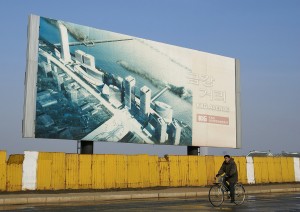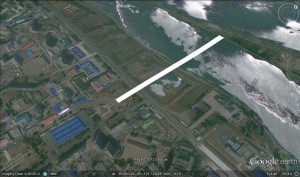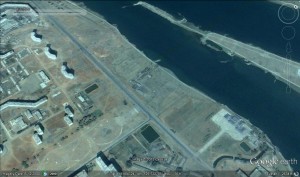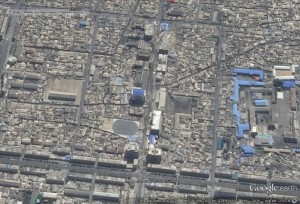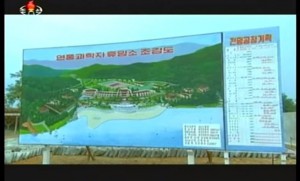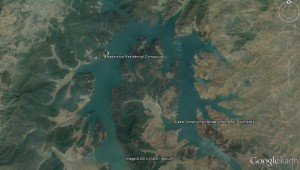“They say there are apartments in Pyongyang selling for US$200,000.”
Jung Eun-yi, a research professor at Gyeongsang National University, was talking about how rapidly housing prices in North Korea have been rising. Jung had just returned from spending January and February in Dandong, China, where she had been tracking trends in the North Korean housing market. In July 2014, the highest price for an apartment in Pyongyang that heard about in Dandong had been US$100,000.
Needless to say, this doesn’t mean that an apartment worth US$100,000 had doubled in value to US$200,000 in the past six months. Nevertheless, the appearance of apartments worth US$200,000 indicates just how quickly Pyongyang apartments are increasing in quality, size, and value.
Jung is one of the foremost experts in South Korea on prices in the North Korean housing market. She received considerable interest from the media because of a paper that she presented at the World Conference on North Korean Studies at the end of Oct. 2014 in which she reported that some apartments in Pyongyang were selling for US$100,000.
In 2013, she had gained attention in the academic community by publishing a paper that included a detailed breakdown of housing prices in the North Korean city of Musan, North Hamgyong Province, down to the neighborhood.
Based on the data collected during her most recent stay in Dandong, Jung argues that there are signs that the housing market in North Korea is turning into a real estate market, rather like South Korea. If a housing market is one in which houses are bought simply for the purpose of living in them, a real estate market is formed when people start to see the houses they buy both as a residence and an investment.
What enabled Jung to publish such a pioneering paper on the North Korean housing market is that she spends all four months of her summer and winter vacations each year in Dandong, where she researches trends in the North Korean housing market.
Jung says that there are several reasons why she is interested in the North Korean housing market. The market offers hints at how the North Korean market economy is developing; it reflects the economic policies that the Kim Jong-un regime are adopting; and it provides a great deal of information about the appearance of a propertied class inside North Korea and about the growing wealth gap between the rich and poor.
What follows is a summary of the interview that Jung gave to the Hankyoreh on Mar. 30, organized by topic.
North Korea’s housing market: most profitable business area
Jung explains that one of the biggest recent changes in the North Korean housing market is the participation of North Korean trading companies. The reason, she says, is that building and selling houses has become even more lucrative than trade.
Why would that be? Jung explains that, while there is a lot of potential demand, there is a limited number of suppliers, creating a monopoly in the market. In other words, it’s easy to find buyers once you build a house.
But there’s just one catch. Before trade companies can jump into the housing market, they have to be working with someone who has connections in North Korea’s bureaucratic system.
As of now, housing transactions in North Korea are technically illegal. Given this situation, it is essential that a business have access to someone who can negotiate the bureaucracy so that it can provide the person buying the house with the permit that is legally required for them to move in.
According to Jung, no matter how much financial backing a developer may have, “they will fail without a partner who can cut through all the red tape.”
The growth of the house-buying class
Jung says that the price of housing in North Korea is linked to rice and US dollars (the exchange rate). When calculations are made in rice, the preferred unit is the ton.
The growth in a housing market that involves the movement of such huge amounts of rice and dollars implies that an increasing number of people in North Korea have that much purchasing ability.
The increasing level of purchasing power, or disposable income, can also be verified in the fact that houses in North Korea are improving in quality every day.
The concept of the “front room” was introduced in some ritzier North Korean houses back in the 1990s. Front room means a living room that includes a kitchen with a sink, rather than the traditional coal-burning kitchen. But even since then, houses have been becoming more elaborate, some using high-quality materials from China.
However, the very increase in the number of people with property – the consumers of these new houses – also implies that the gap between the rich and the poor is widening. Behind every house that is sold is a family whose financial destitution leaves them no choice but to sell the house in which they had been living. In this way, the growth of the housing market in North Korea offers another glimpse at the growing wealth disparity there.
Predictions for the North Korean housing market
Jung expects that the North Korean real estate market will continue to expand for a significant period of time. Just as in South Korea, there was also an explosion in demand for houses in North Korea starting in the early 1980s because of the baby boomers, the generation of those born around 1957.
However, the demand in North Korea was suppressed by the “arduous march,” Jung believes. During this famine in the mid-1990s, when the severe shortage of food caused people to starve to death, the massive flight of people out of the country actually led to an increase in the number of vacant houses around North Korea’s border with China.
But with the subsequent development of private markets and the appearance of people with money to spend in the 2000s, these vacant residences were the first to be sold at cut-rate prices. This signaled the beginning of growth in the housing market.
Housing prices in North Korea increased rapidly then faltered during the currency reform in 2009, when the Kim Jong-il regime attempted to put limits on these markets. But from 2011 to 2014, after the North Korean government started to tolerate the markets again, housing prices soared once more.
Jung believes that the growth trend in North Korean housing prices will continue for the time being. The reason is that demand for housing both among baby boomers and among new members of the propertied class is likely to continue.
The North Korean housing market and Kim Jong-un’s economic reforms
Jung explains that the regime of Kim Jong-un is taking steps toward normalizing the housing market. Presumably, the regime has concluded that the official economy of the country is suffering major losses because the housing market is outside of the system.
As one example, Jung cites housing deals between private citizens in the 1990s. While the volume of transactions greatly increased during this period, the failure to solve the issue of legal collateral resulted in unending disputes about these transactions.
There was also widespread corruption connected with them. Jung says that sometimes the housing allocation department of the urban management bureau of the people’s committee – which is in charge of issuing residential licenses – would confiscate houses that had been illegally bought by low-ranking officials and then conduct business with those houses themselves. Since the housing market did not go beyond individuals making money, it did not benefit government finances.
Jung believes that the Kim Jong-un regime was trying to stamp out this kind of corruption when it established housing delegation offices in 2013. These offices are public organizations whose purpose is to take money from public citizens and to build them a new house. The existence of this organization is another example that both central planning and market forces are at work in the North Korean economy today.
Jung sees this as being part of efforts to institutionalize market mechanisms. “This is evidence that the Kim Jong-un regime is going beyond the military-first policy known as Songun that was instituted by Kim’s father and moving down the path toward socialist capitalism,” she said.
Housing market: A market economy learning center
According to Jung, the housing market is turning into a “learning center” writ large for the market economy – not just for the Kim regime, but for the North Korean public. Most crucially, housing prices in North Korea are already being decided based on a variety of factors, including access to transportation, markets, nearby facilities, and even the number of floors. As an example, Jung mentioned the price of apartments in Musan, a county in North Hamgyong Province. The most expensive apartments on the market there are seven-story buildings for “people of national merit.” But the most expensive, she said, are not the seven-story blocks, but the five-story ones. The smaller buildings go for more because they don’t have elevators, which makes them better for moving firewood. One- to two-story buildings are less popular because they are seen as similar to South Korea’s, Jung added. Even in North Korea, a number of different variables go into shaping housing market prices.
Chinese presence in the North Korean real estate market
Jung also noted that some Chinese people have begun branching into the North Korean real estate market. Chinese residents of North Korea who were interviewed in Dandong indicated that more and more Chinese have begun investing after seeing the real estate. North Korea has not yet made its housing fully open to foreigners, but those who invest in North Korea are reportedly allowed to buy housing for temporary residence. It’s a sign that regulations on foreign activities are being relaxed. As a result, an increasing number of Chinese people are investing in needed areas such as toll processing and solar energy development in Pyongyang and other places – and acquiring housing and land in the process. The strategy is twofold: immediate gains, along with more long-term profits from the land.
The real estate housewives of North Korea?
“It hasn’t reached that point yet, but the signs are there.” According to Jung, relatively rigid enforcement of the one-family, one-home rule in North Korea means the country has yet to develop a visible community of “housewife speculators” buying and selling homes for profit. But there have been cases of people buying homes under their mother’s name, or investing when a house is still incomplete and cheaper before turning around and selling at a higher price when it is finished, she added. Both are similar to the kinds of behaviors seen among South Korea’s housewife speculators. As these activities increase, Jung notes, the idea of the home as a place of residence only is giving way to the idea of real estate as an investment – even in North Korea.
The increasingly market-oriented nature of the North Korean housing market, and the Kim Jong-un regime’s attempts to incorporate the changes into its system, led Jung to predict that the shift toward market economy principles will only grow and intensify going ahead. The question now is whether this market-oriented real estate market will lead North Korea to reprise the disastrous experience of ’70s-era Gangnam as the economy grows – or whether the result will be something completely different.

